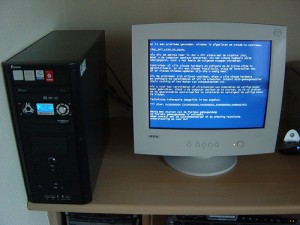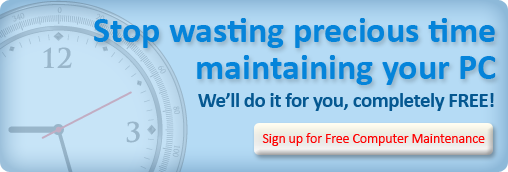
image courtesy of flickr user: Peter Huys
Start by deleting temporary and other unused, unneeded files. This is a simple process involving a built-in utility, Windows Disk Cleanup. This program eliminates temporary files of all sorts, empties your recycle bin, and even removes unused software and Windows utilities if you want.
After your unnecessary files are cleaned off, you need to defragment your fragmented computer. But how did your computer get fragmented? Well, computers are very much like teenagers. Teens come home and toss everything everywhere: shoes here, bookbag there, purse over here, dirty clothes on the floor, leaving a trail of chaos behind them. When a computer saves data, it does the same thing: a little here on the hard drive, a little there, some more over yonder. Defragmenting a computer is like cleaning and organizing a house, in the case of modern large hard drive computers a very large house, and it takes a bit of time.
After these two steps are taken, you should have a faster computer. If not, you have a more serious problem. Try updating and running your antivirus and antispyware software. If you have difficulty getting these programs to eliminate all the problems they find, you probably have a virus problem you can’t easily get rid of. You need professional help for this.
You may also be able to increase the speed of your computer if you manually eliminate unnecessary programs. These unwanted programs often take up precious processor time by front-loading parts of themselves into active memory. Think of it as having to go to the grocery store, memorizing your entire grocery list, and then memorizing a few poems on top of that that you must recite to the cashier prior to purchasing your groceries. It takes time – if you can do it – and you are almost certain to forget things. By getting rid of the “poems” of unwanted and unneeded programs, you can usually speed up your slow computer.
Running Disk Cleanup
1. Select the Start button, then choose “All Programs.”
2. Select “Accessories,” then “System Tools.”
3. Select “Disk Cleanup,” then select your main hard drive (“C” for most people.) The computer will process for a minute or twenty, depending on how much is there to clean up.
4. Select any files you want to get rid of, then click “OK.” Most of the time, getting rid of all files is preferable. If you have any doubts, don’t select that one.
Defragmenting Your Computer
1. Select the Start button, then choose “All Programs.”
2. Select “Accessories,” then “System Tools.”
3. Select “Disk Defragmenter.”
4. Choose the drive you want to defragment, then click “OK.” Because defragmentation can take hours, especially with today’s modern large hard drives, this is something you might want to do overnight.
Uninstalling Unwanted Programs:
1. Click the Start button on the bottom left of the screen.
2. Open the Control Panel.
3. Select “Add or Remove Programs.”
4. Give your computer up to five minutes to completely process all the programs on your hard drive. Go down the list and select programs you know you want to delete. Then choose “Delete” and follow the directions.
5. If you are in doubt about ANY of these programs, do not delete them.
